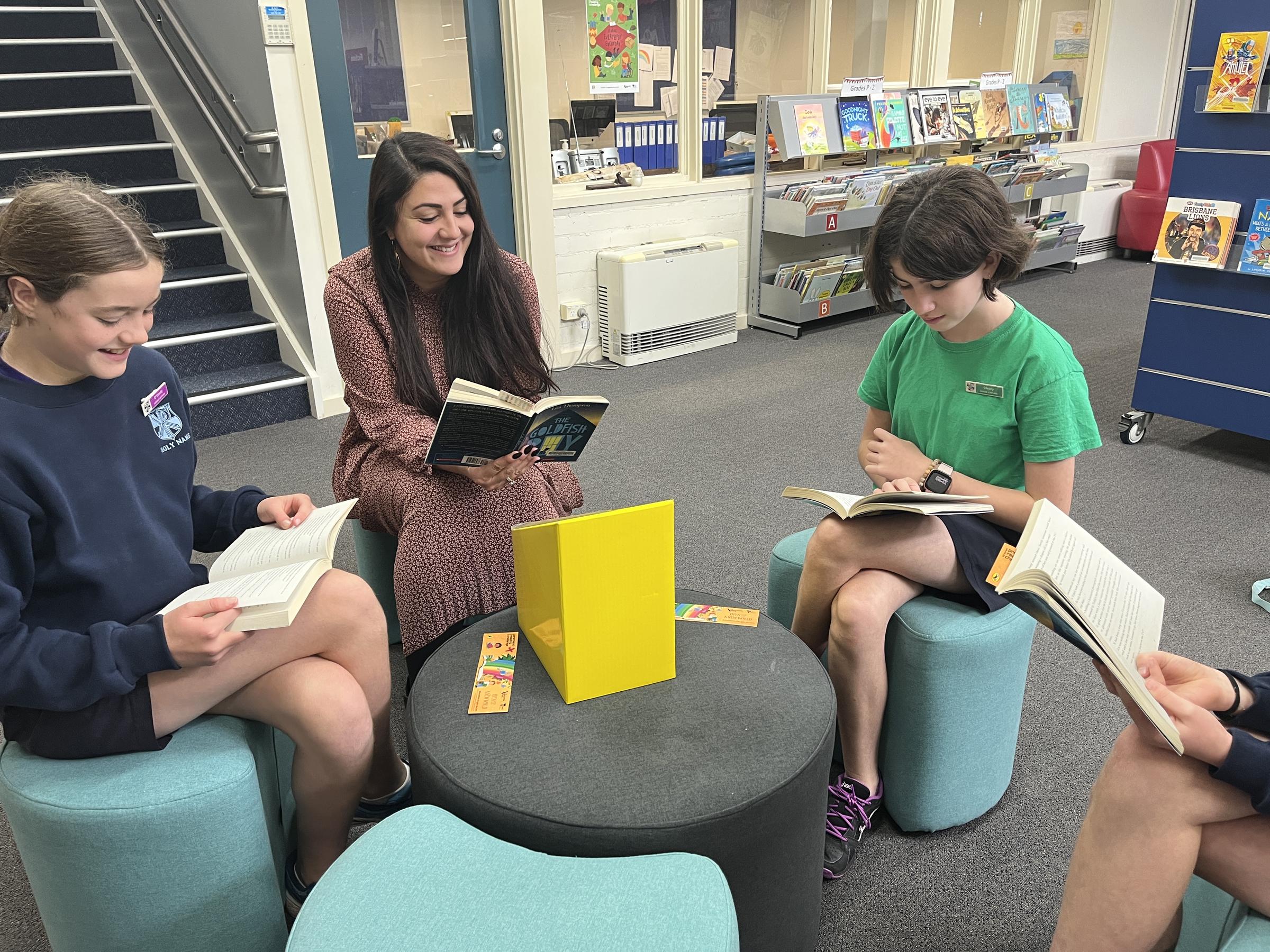LITERACY /
LEARNING & TEACHING
Ms Helen Butler

LITERACY /
LEARNING & TEACHING
Ms Helen Butler
Literacy Learning at Holy Name
Dear Parents/Carers and Community,
Literacy learning across the school has certainly taken off this term. All year levels have been focused on establishing supportive learning environments that allow all students to flourish in literacy. In this newsletter we put a spotlight on writing!
The Victorian Writing Curriculum outlines a focus for writing related to:


Holy Name Year 1/2 oral story retell
At Holy Name Catholic Primary School, the reading and writing curriculum concepts, skills and behaviours are planned to complement and reinforce the relationship between these two core learning areas. However, teachers plan for the transference of this learning across the curriculum in areas like inquiry and religion for authentic purposes.
In February, the Melbourne Archdiocese Catholic Schools released the Vision for Instruction Position Statement. Within this statement, the Archdiocese outlined the evidence-based explicit instruction sequence derived from research on how students learn as well as studies of the most successful teachers. The stages of teaching (outlined below), from introduction of new content to independent practice, might all occur in one day or may occur over a week or more, depending on the content and the students. However, effective teaching will generally follow this sequence:
Explicit instruction:[1] Teachers fully explain the concepts and skills that students are required to learn. The most efficient way to teach knowledge is to teach it explicitly, and this is particularly true for the introduction of new concepts (Rosenshine 2012).
However, this does not mean students are passively receiving information.
Modelling: Effective teachers break down what students need to learn into smaller learning outcomes and model each step so that students can see what is expected of them (Rosenshine 2012).
Guided practice: Teachers provide multiple opportunities for students to practise, and support is gradually removed as students develop understanding and can work more independently.
Independent practice: Once students have developed understanding, teachers ask students to complete tasks themselves while the teacher monitors and provides feedback.
Formative assessment: Effective questioning is a core part of effective formative assessment. Instruction is most effective when it is highly interactive with frequent checks for understanding. Identifying where a student is in their learning by assessing what they know, also helps teachers choose the right starting place before introducing a new unit of work (AERO 2021)


The sequence outlined above supports Holy Name’s approach to our lesson structures in literacy. For example, in writing as outlined below:


You will note that the gradual release of support is reduced, and ownership of learning is shared between teachers and students – growing student agency for learning in the process.
If you would like some ideas of how to continue to grow your child/’s passion for writing here are some tips for supporting writing at home from years Foundation to Year 6 include:


A tip for emerging writers: Do not worry if your child’s letters or words are sometimes backwards or misspelt at this age. The important thing is that they have fun writing at home and are trying.


Helen Butler
[1] Source: Melbourne Archdiocese Catholic Schools Ltd, 2024., page, 13.